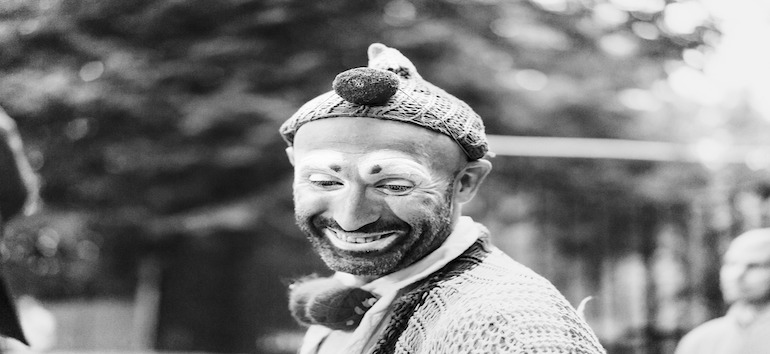Sign up for the Family Tree Newsletter Plus, you’ll receive our 10 Essential Genealogy Research Forms PDF as a special thank you!
Get Your Free Genealogy Forms
"*" indicates required fields
The new IT movie was recently released in theaters. While many people view clowns as cheerful and friendly, there are just as many who feel they are terrifying and not to be trusted. But where do clowns even come from? How long ago did they get there start? Here we’ll review a brief history of clowns.
The first clowns noted in history actually are from quite a long time ago – being recorded as far back as 5000 years ago, in Egypt. While there purpose was to make the pharaohs and their families amused, there job was less of a happy one – as they were members of the Dangus people that were kept simply for the royals’ entertainment. They would dress in leopard skins and strange masks, while they danced and imitated the Egyptian Gods, such as Bes – the God of Dance and Battle.
Ancient China is also known to have had clowns in their Imperial Court, as far back as 1046-256 B.C., during the Zhou Dynasty. One famous clown is still noted today, who was named as Yu Sze. He served as a clown to Ch’in Shih Huang-ti, who built the Great Wall of China.
Clowns were also quite popular in both ancient Roman and Greek theater. Here, they were a sort of zanni “rustic fool” characters of the early modern commedia dell’arte. It was here that “Clown” came into use as the given name of a stock character.
“Clown” first was recorded as an English word around the year of 1560, at which time it had a generic definition of “rustic, boor, peasant”. This is the sort of clown that was used when referring to the fool characters as they were shown in both Shakespeare’s Othello and The Winter’s Tale. The idea of a clown as referring to a professional or habitual fool or jester develops around 1600, based on Elizabethan “rustic fool” characters such as those shown in Shakespeare’s plays.
What we now consider a “circus clown” developed in the 1800’s, occurring in several parts of the world around the same time. The first “modern circus” started in London in the late 18th century at an Equestrian school. To add entertainment to the show, the owner, Phillip Astley, added a clown. Meanwhile, clown characters were also becoming popular in places like Vienna and the United States.
In the 20th century, we saw the popularity of clowns continue to grow, and a variety of clown characters develop. The famous Charlie Chaplan helped to develop the “tramp” or “hobo” type clown, while Dodo the Clown, depicted he circus clown as a tragicomic stock character, “a funny man with a drinking problem”.
These days, clowns aren’t simply found at the circus or on the big screen, but can also be seen at festivals and even children’s birthday parties. While some continue to feel frightened in their presence, the average clown is usually just a kind person that wants to spread joy and laughter to children of all ages.
Do you know anyone that has worked as a clown? If your ancestors were involved in the circus or similar work, check out our Send in the Clowns article for tips on researching the “Greatest Show on Earth”.
ADVERTISEMENT





